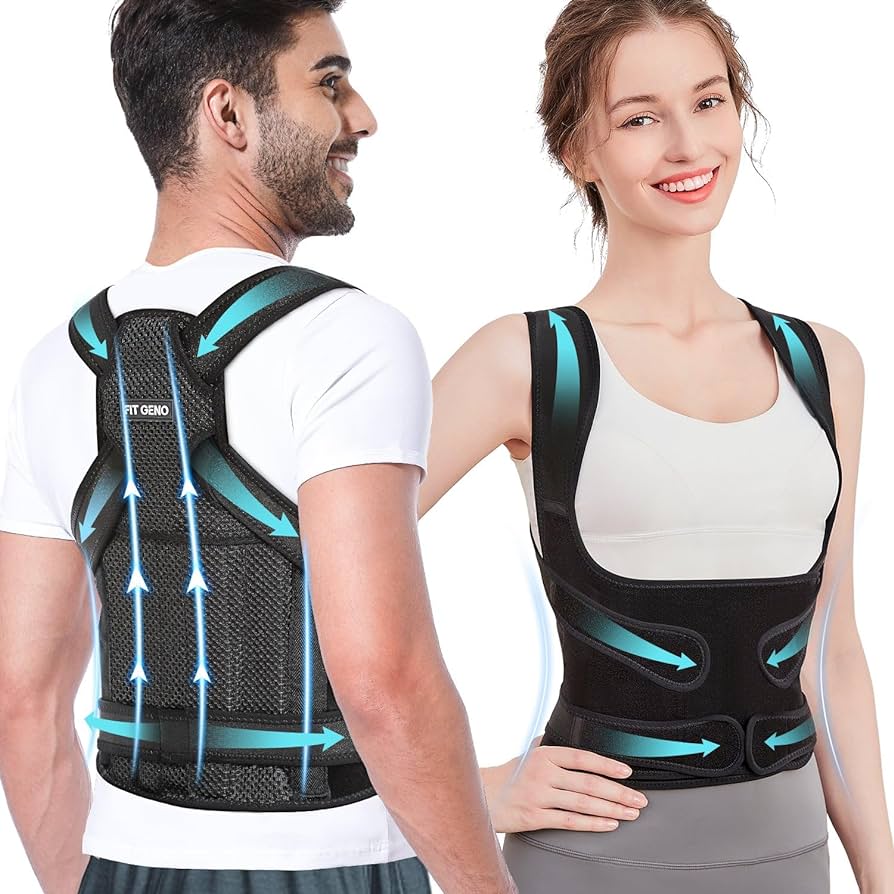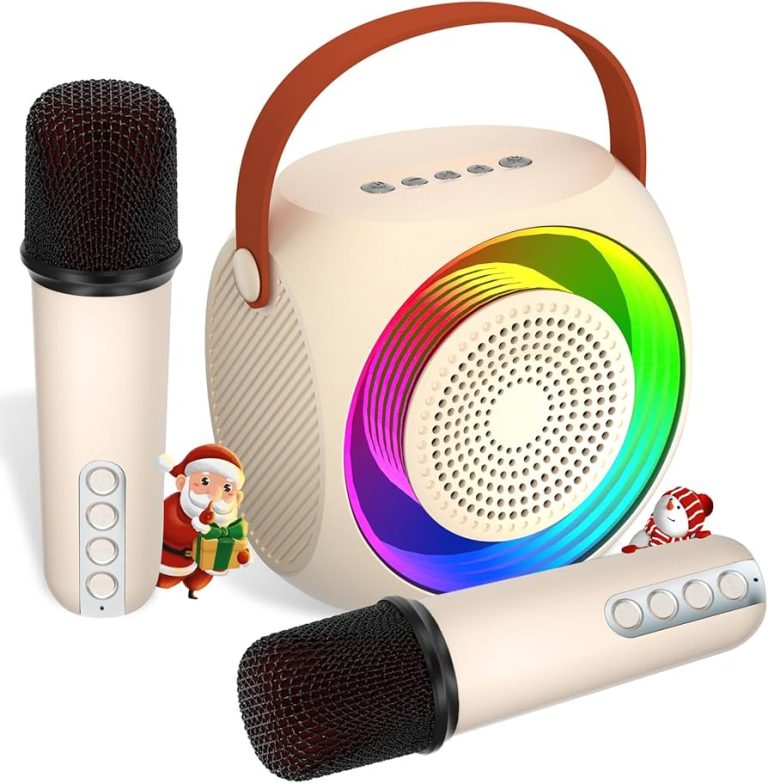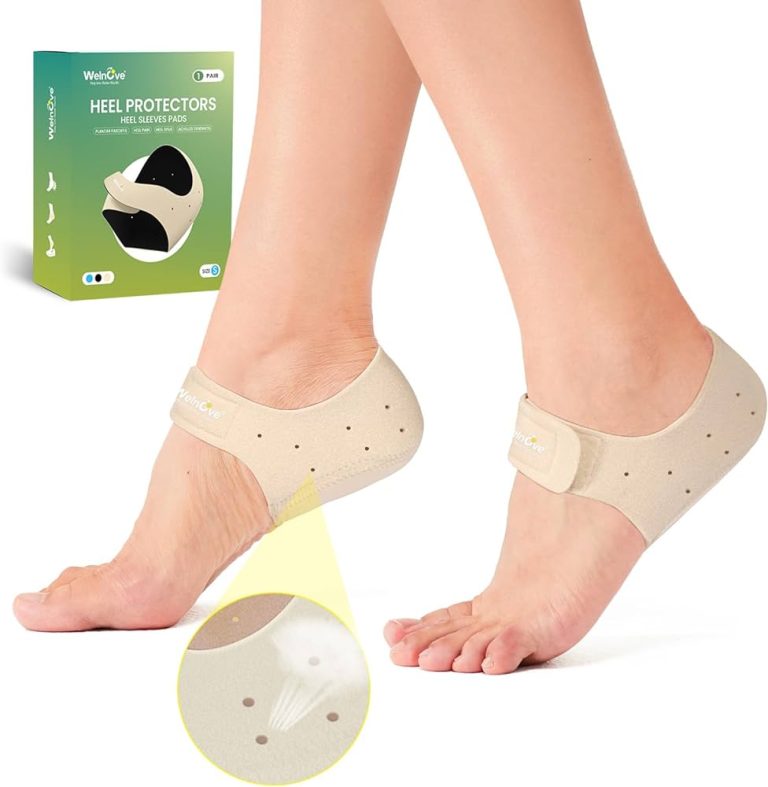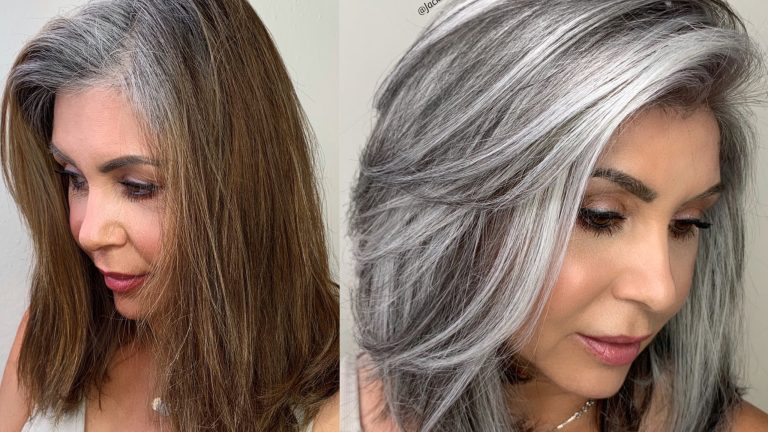Top 9 Best Posture Correctors: Improve Your Posture and Reduce Discomfort
Struggling with back pain or slouching shoulders? You’re not alone. Poor posture affects millions, leading to discomfort and long-term health issues. Fortunately, posture correctors offer a simple solution to help you stand tall and feel better.
In this guide, you’ll discover the 9 best posture correctors on the market. Whether you’re looking for something discreet to wear under clothes or a more robust option for serious support, we’ve got you covered. Say goodbye to slouching and hello to a healthier, more confident you.
Types of Posture Correctors
Different types of posture correctors cater to various needs and preferences. Here’s a look at the key options available:
Aligners
Aligners offer gentle support for your upper back, shoulders, and neck. They usually consist of elastic materials that fit around your shoulders and pull them into alignment. For example, you can wear them under your clothes discreetly throughout the day without anyone noticing. Aligners are perfect if you need something lightweight that provides constant reminders to maintain proper posture.
Braces
Braces provide more rigid support to help you maintain correct posture. They tend to use firmer materials that encompass parts of your upper and lower back. For instance, some designs resemble a vest that you wear over your torso, offering extensive support to adjust your spine’s alignment. Braces are ideal if you require stronger assistance to correct severe posture issues or if you’re recovering from an injury.
Smart Devices
Smart devices take posture correction to the next level by incorporating technology. These gadgets typically use sensors to monitor your posture and provide feedback when you slouch. For example, a common smart device might vibrate or send notifications to your phone, nudging you to sit or stand correctly. Smart posture correctors are excellent if you want real-time posture tracking and proactive reminders.
By understanding these different types of posture correctors, you can choose the one that best addresses your needs and helps improve your posture effectively.
Examining the Top 9 Best Posture Correctors
Selecting the best posture corrector involves understanding key features and endorsements. Here’s what you need to know.
Overview of Selection Criteria
Identifying the top posture correctors requires evaluating comfort, adjustability, material quality, and user reviews. Comfort ensures you can wear the device for extended periods without discomfort. Adjustability caters to different body sizes and postures. Material quality affects durability and breathability, ensuring you won’t feel restricted. User reviews provide insights into real-world performance and satisfaction.
Importance of FDA Approval and Medical Endorsement
FDA approval and medical endorsements give credibility to posture correctors. FDA approval means the device meets specific health and safety standards. Medical endorsements from chiropractors or physical therapists indicate professional confidence in the product’s effectiveness. Trusting products with these validations ensures you’re choosing a posture corrector that’s both safe and beneficial for your health.
Review of Each Top Posture Corrector
Let’s explore the features and benefits of nine top-rated posture correctors to help you make an informed choice.
Product 1: Features and Benefits
Provides adjustable straps and breathable material for all-day comfort. Offers lumbar support that targets both upper and lower back pain. Includes an easy-to-wear design, making it suitable for daily use.
Product 2: Features and Benefits
Features a minimalist design that fits discreetly under clothing. Boasts smart technology for real-time posture tracking and notifications. Charges quickly, ensuring it’s always ready when you need it.
Product 3: Features and Benefits
Utilizes soft foam padding for added comfort during extended wear. Integrates a posture training guide for optimal results. Compatible with both males and females, enhancing usability.
Product 4: Features and Benefits
Equipped with magnet therapy for additional pain relief. Ensures a snug fit with adjustable and durable straps. Designed for athletes and active individuals who need robust support.
Product 5: Features and Benefits
Supports neck alignment along with back correction. Includes an ergonomic design that moves with your body. Features lightweight, breathable materials to minimize sweat build-up.
Product 6: Features and Benefits
Enables seamless integration with your smartphone through a dedicated app. Tracks your progress and suggests improvements over time. Features hypoallergenic materials, making it ideal for sensitive skin.
Product 7: Features and Benefits
Incorporates copper-infused fabric known for its antimicrobial properties. Combines posture correction with muscle tension relief. Targets both posture correction and overall spinal health.
Product 8: Features and Benefits
Provides dual support for both shoulders and back alignment. Includes a detachable support pad for added versatility. Suits various body types with its highly adaptable design.
Product 9: Features and Benefits
Designed with reinforced stitching for long-term durability. Employs padded straps to reduce skin irritation. Offers comprehensive support from the upper neck to the lower back, perfect for extended wear.
Benefits of Using a Posture Corrector
A posture corrector offers numerous advantages beyond just aligning your spine. Here are some key benefits:
Physical Health Benefits
- Reduces Back Pain: Wearing a posture corrector can relieve chronic back pain. The support leads to muscle relaxation and reduces strain on the spine.
- Improves Breathing: Proper posture opens up your chest cavity. This allows your lungs to expand fully, enhancing your respiratory function.
- Enhances Digestion: Good posture aids in better digestion. It prevents the compression of abdominal organs, allowing food to pass more smoothly.
- Boosts Muscle Tone: Regular use can strengthen your core and back muscles. This support improves overall muscle tone and reduces the risk of injury.
- Increases Energy Levels: Proper alignment enhances blood circulation. Improved blood flow leads to increased oxygen delivery, boosting your energy.
- Reduces Stress and Anxiety: Correct posture positively affects your mood. A well-aligned spine can reduce levels of stress and anxiety.
- Boosts Confidence: Standing tall enhances your appearance and self-esteem. Being aware of your posture can improve your self-confidence.
- Improves Focus and Productivity: Proper posture keeps you alert and focused. Better focus leads to improved workplace productivity.
- Promotes Better Sleep: Enhanced posture can improve sleep quality. Proper alignment reduces bodily discomfort, allowing for a more restful night.
- Elevates Mood: Improved posture is linked to positive body language. Standing tall influences your mood and mental well-being, making you feel happier.
Using a posture corrector ensures you reap these physical and mental health benefits.
How to Choose the Right Posture Corrector
Selecting the perfect posture corrector can make a huge difference in how effectively it improves your posture. Consider these key aspects to ensure you make an informed decision.
Factors to Consider
Evaluate your requirements and preferences before choosing a posture corrector. Start by identifying the type of corrector that suits your needs—whether it’s a brace, aligner, or smart device. Research the product’s user reviews and ratings for real-world insights. Check if the corrector has medical endorsements or FDA approval, verifying it’s safe and credible. Finally, consider your budget but don’t compromise on quality for a lower price.
Fit and Comfort
Ensure the posture corrector offers a snug yet comfortable fit. Look for adjustable straps and customizable features that cater to different body types and sizes. Pay attention to the material used—breathable, skin-friendly fabrics are ideal for long-term wear. Test the corrector for ease of movement, ensuring it doesn’t restrict your daily activities. Always try it on before finalizing the purchase, if possible.
Common Questions About Posture Correctors
When it comes to posture correctors, you might have a few pressing questions. Let’s address the most common ones to help you make an informed decision.
How Long Should You Wear a Posture Corrector?
Start wearing your posture corrector for 15-30 minutes a day. Gradually increase the duration by 15 minutes each week. Aim to wear it for about 1-2 hours daily once your body adjusts. It’s important to avoid overuse, as excessive wearing can lead to muscle dependency.
Are There Any Side Effects?
Wearing a posture corrector for extended periods or too tightly can lead to discomfort. You might experience skin irritation or soreness, especially if the device isn’t breathable or properly adjusted. To minimize side effects, ensure your corrector fits well and is made of high-quality, breathable materials. Consult a healthcare professional if you have any concerns.
Conclusion
Choosing the right posture corrector can significantly improve your overall well-being. By considering factors like comfort adjustability and material quality you can find the perfect fit for your needs. Remember to start with short wear times and gradually increase them to avoid muscle dependency. Pay attention to any discomfort or skin irritation and consult a healthcare professional if necessary. With the right posture corrector you’ll be on your way to better posture and a healthier lifestyle.
Frequently Asked Questions
What are the negative impacts of poor posture?
Poor posture can lead to various health issues, including back pain, neck strain, reduced lung capacity, poor circulation, and digestive problems. Over time, it can also cause musculoskeletal issues and negatively affect your overall well-being.
What types of posture correctors are available?
There are several types of posture correctors, including aligners, braces, and smart devices. Each type has its unique features, catering to different needs and preferences for improving posture.
How should I choose the best posture corrector?
Select a posture corrector based on comfort, adjustability, material quality, user reviews, FDA approval, and medical endorsements. These factors ensure the product’s credibility and safety.
How long should I wear a posture corrector daily?
Start wearing a posture corrector for 15-30 minutes a day. Gradually increase the duration as your body adjusts to avoid muscle dependency and ensure effective posture correction.
Are there any side effects of wearing a posture corrector?
Potential side effects include discomfort, skin irritation, and soreness, especially from extended or tight wearing. It’s crucial to choose a well-fitted, breathable corrector and follow recommended usage guidelines.
Can overuse of a posture corrector cause muscle dependency?
Yes, overusing a posture corrector can lead to muscle dependency, weakening the muscles responsible for maintaining proper posture. It’s important to use the corrector as a training tool rather than a permanent solution.
What should I do if I experience discomfort while wearing a posture corrector?
If you experience discomfort, ensure your posture corrector is fitted correctly and not too tight. If problems persist, consult a healthcare professional for personalized advice and potential alternatives.
Is it important to consult a healthcare professional before using a posture corrector?
Yes, consulting a healthcare professional is advisable to ensure that the posture corrector is suitable for your specific needs and to avoid any potential health risks.






